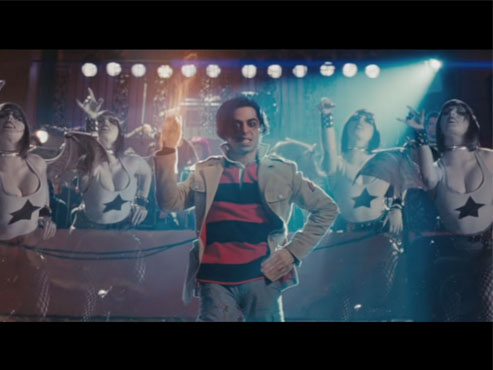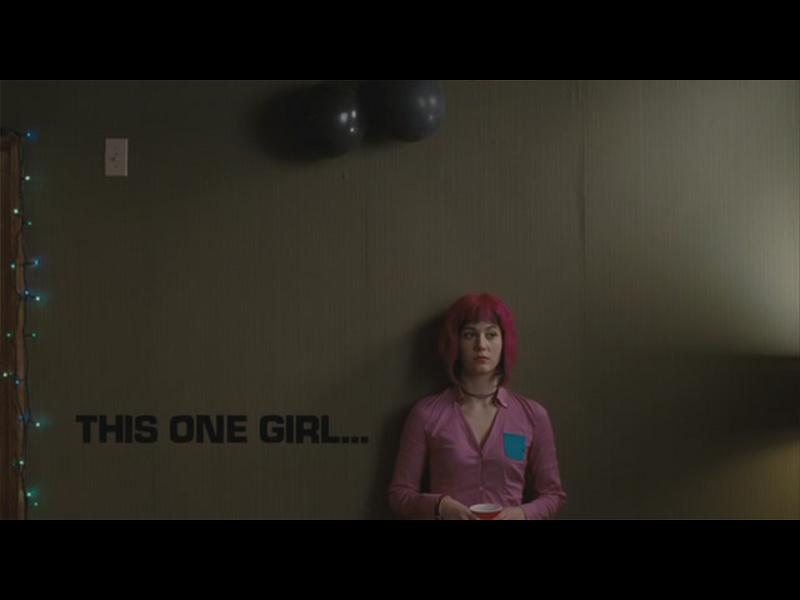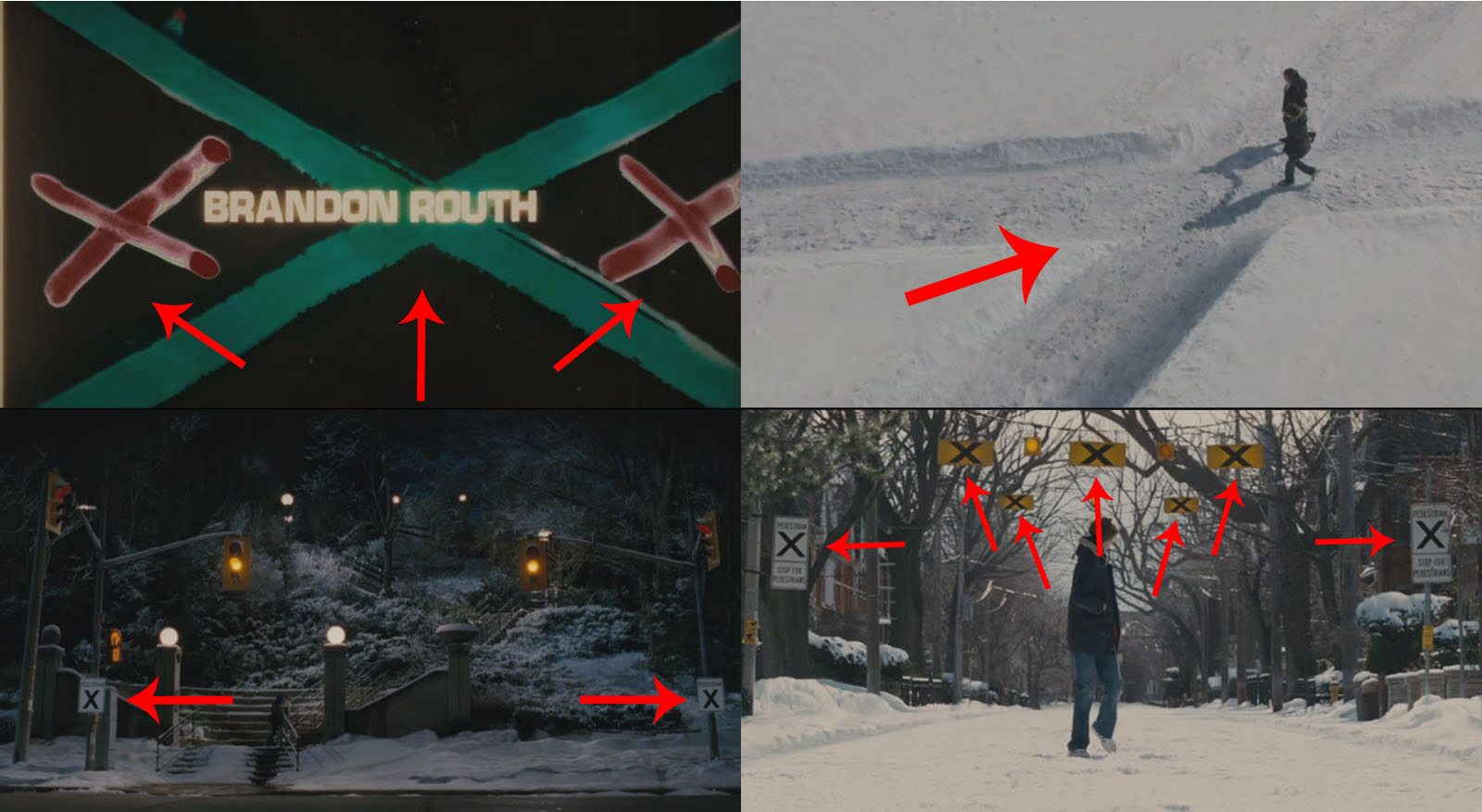Warning: This review may contain traces of spoilers and may have come into contact with spoilers from other movies.
(this article was originally published over at Black Gate!)
Scott Pilgrim vs. The World is, in my opinion, one of the best movies of 2010. I’d even go so far as to say it’s one of my favourite films of the past five years, but after its lackluster release last August, viewers seem divided as to whether or not they enjoyed the whole Scott Pilgrim experience. Some have said that it’s mostly style with very little substance or, as a friend of mine put it, “the cinematic equivalent of a box of Nerds – fizzling sweetly on the tongue, then gone and forgotten!” But I disagree, staunch Scott Pilgrim fan that I am, and I’m here to tell you why, if you found yourself wholly underwhelmed by the film, you should give it just one more chance. If you know where to look, Scott Pilgrim vs. The World will surprise you with its intricacies.
This all started when my lovely and mysterious friend C.S.E. Cooney posted as her Facebook status “Didn’t like Scott Pilgrim VS the World as much as I wanted to. Entertaining, though.” I don’t enjoy being one of those film nerds who’s always telling people that they missed the point, but I’ve been a fan of the Scott Pilgrim comics and the works of director Edgar Wright for many years now, and I had high hopes for the big-screen Scott Pilgrim outing that he had been working on. When the movie opened to middling-to-complete-bomb range numbers, even though it had recieved nothing but praise in its preview screenings, I found myself rather saddened. Scott Pilgrim vs. The World was a risky move from the perspective of a major studio executive, and the fact that it flopped makes it unlikely that another movie like it will come along anytime soon. Much like another offbeat comic book film from earlier in 2010 – Kick-Ass – Scott Pilgrim’s failure to pull in large opening weekend numbers means that we won’t see as many unusual comic book adaptations given big budgets, and instead we’ll be treated to a thousand more Iron Man and Fantastic Four movies. Not that I minded Iron Man, I just think that Scott Pilgrim has more to it. Anyway, all of this to say that when I saw Claire’s status, I knew that I had to speak up in Scott’s defense. I’m a bit belligerent that way.
Soon a small sample of Claire’s friends had joined in, and the discussion had reached over forty posts. Since Claire had given me permission to gush about the movie, others had thrown in their two cents and the kind of debate that used to make me feel excited in film class had begun. I started to realize that while I firmly believe that the true enjoyment of Scott Pilgrim starts on a second viewing, most people will never make it to a second viewing because they’ll be too distracted by the crazy visual style to notice the subtleties that make the movie so special. Which brings us to the purpose of this article. I’m going to show you what you missed in Scott Pilgrim vs. The World, and I’ll bet you a milkshake and a basket of onion rings that once I’m done, you’ll see the movie differently.
What is Scott Pilgrim vs. The World REALLY about? On the surface, it’s the story of Scott, a hipster douchebag, the bassist in a garage band, who finds himself smitten by the mysterious girl who has appeared in his dreams and then in his life: Ramona Flowers. Briefly juggling Ramona and his high-school-aged girlfriend Knives, Scott finally breaks things off with Knives and starts to date Ramona exclusively…only to find out that he must do battle with her seven evil exes in order to keep her as his partner. Before I get into the more meta stuff, let’s examine what’s contained in the premise. The story explores the concepts of what’s socially acceptable as far as fidelity, the burdens of maturity, and the inability for a person to escape their past. But above all, this is a movie about relationships, be they with friends, lovers, former lovers or enemies.
The structure of Scott Pilgrim gives us some insight into what’s actually going on in the comic book/video game/pop culture mashup that’s Scott Pilgrim’s precious little life.
http://www.youtube.com/watch?v=b0UWemm1kVI
As director Edgar Wright says in this behind-the-scenes featurette, “Scott Pilgrim is the hero of his own movie in his head, and this is that movie.” In other words, what we’re seeing on the screen isn’t a world where comic book sound effects really fly around and Street Fighter-like fight scenes break out everywhere. The movie is a slacker’s fantasy, the events as Scott remembers them enhanced by his love of pop culture, video games, comic books, movies and music. This also explains why Scott doesn’t really pay for his mistakes in the end, as he has a tendency to gloss over his less-than-savoury behaviour (in the movie he frequently “forgets” about the bad things he’s done – he’s not lying, he’s in denial). I have heard many people criticize the film for containing, as Claire put it, a lot of “male fantasy wish-fulfillment,” and, well, it does, but this is the result of an unreliable narrator who happens to be a male prone to fantasizing.
Let’s examine the structure and style of Scott Pilgrim vs. The World a little further, this time using another quote from the director as our basis of analysis. Edgar Wright has said that “In musicals, when the emotion is too strong, people break into song. In this it’s the same thing: when the emotion becomes too strong, people break into fights.”
At its core, Scott Pilgrim vs. The World is just that: a musical. Even though the fight sequences have replaced the dance numbers that one might find in a typical musical, the fighting is frequently paired with the music – which itself is a major part of the film. Take, for example, the first evil ex battle, wherein Scott faces off against Matthew Patel. As the fight goes on, it becomes a full-blown musical number, with Patel singing about Scott’s impending defeat with backup vocals provided by a bevy of demon hipster chicks. Note, too, that this fight takes place at one of Sex Bob-omb’s performances, as do the fights against the Katayanagi twins and Gideon Graves. Even the fight against Todd Ingram takes place following a show by the Clash at Demonhead. All of this is just a new take on the old tradition of musicals, wherein music, action and emotion all collide in the setpieces that make the movie memorable. Something else that I find interesting about the connection between the fights and the music in the film is that as Scott fights his way through the list of evil exes, so too does Sex Bob-omb ascend the ranks of the battle of the bands. This is unlike the comics, as in the movie Sex Bob-omb’s story arc parallels Scott’s a lot more directly.

Since we’re already on the topic, I’d like to take this moment to discuss the fight scenes a bit. Again, I feel like there’s a lot going on here that people don’t see, and I’ll get the big one out of the way first. I firmly believe that these physical battles serve as a metaphor for emotional ones. Now, some people have said that they think I’m giving the movie too much credit on this point, but I’m sticking to my guns here. There’s a scene early on in the movie, before the battles start, where Scott travels around a party asking people about Ramona. Listen to what they say about her:
“I hear she kicks all kinds of ass.”
“She’s got some battle scars, dude.”
Now, this may not be the case for everyone, but when I first heard these phrases, I immediately thought that they were just employing the use of slang. Saying someone kicks ass usually just means that they’re cool, and saying that they have battle scars (much like saying they have baggage) implies that they’ve been through some rough relationships. But in the world of Scott Pilgrim we quickly find out that these phrases are literal: people really do have epic, giant battles with surprising frequency. Notice also that all the battles in the film take place between people who are involved in relationships. Scott must grapple with Ramona’s past – in the form of seven evil exes – in order to be with her. Ramona fights with the only relic of her bi-curious phase. At no point does anyone outside of Ramona’s love life enter the fray, which, to me, suggests that within the realm of this movie, love and fighting are inextricably connected. Dare I say it? Love is a battlefield, and that’s the real point of Scott Pilgrim vs. The World.
Scott Pilgrim vs. The World is like an enormous mashup of all different kinds of media. The film isn’t just about comics or video games or music, but all three and more. I see it as a commentary on the way the kids of the 1980’s now take in entertainment. We don’t only listen to music or only play video games or only read comic books or only watch movies. We indulge in all of these recreational activities, and Scott Pilgrim vs. The World has them all. It has the fights of a video game, the music of a rock album, the sound effects of a comic book, and it’s packaged as a film. It’s like a celebration of all the different facets of media culture, and there’s something for everybody. Frankly, I don’t think this is the kind of movie that can be properly viewed in a theatre, because in a theatre it’s taboo to get up out of your seat and dance in the aisle. Speaking of theatres, Scott Pilgrim vs. The World is also rife with theatricality in a “live theatre” sort of way. Next time you watch the film, pay attention to how many scenes end with the lights going off rather than fading to black. It’s like a scene change in a play (a musical, perhaps?) more than a scene transition in a movie.
Now that I’ve talked (extensively) about the structure and style of the film, I’d like to zoom in a bit and talk briefly about the characters. I’m not going to go into too much detail here, because if you want more information on the characters you need only seek out the Scott Pilgrim comics. There are only two characters that I want to discuss: Scott and Ramona . In my opinion, there has not been a film protagonist as interesting as Scott Pilgrim in quite some time (Kick-Ass comes close, but that’s a whole other article entirely). I find it very refreshing to see such an ordinary, lazy slacker like Mr. Pilgrim turned into a superhero because he’s a character that I can actually relate to. Tony Stark may be a charismatic, if troubled, hero, but who among us is a super-genius billionaire? Scott is a new kind of hero: the average joe glorified. He doesn’t wear Gap clothing, listen to pop music or drive a sleek and shiny car. He wears clothes from Goodwill and lives in a one-bedroom apartment which he shares with his gay roommate. He doesn’t have a job or his own place, and he’s desperately clinging to his youth before it fades away as he ages into his twenties (he’s dating a high-schooler, after all). He’s more real than the entire cast of Friends, and I love it.

Ramona is a new form of femme fatale. She’s mysterious, exotic (from America!) and deadly – in that any association with her will bring down the wrath of the league of evil exes on your head. It’s unfortunate that the really deep and interesting parts of Ramona’s story were left out of the movie, because she feels a lot more well-rounded as a character in the comics. In the film, though, she serves different functions: at first she’s seen as the ideal and the unattainable, but once she and Scott get together, he quickly realizes that she’s haunted by her mistakes, which are embodied in the forms of her evil exes. She’s ashamed of her past and is always trying to reinvent herself or disappear. It’s quite tragic, really. The most interesting thing about Ramona in the movie, however, is when Scott asks her why she dated him. Her response is the same as when Scott tells his sister why he’s dating a high-schooler: “It’s just easy.” Scott is to Ramona what Knives is to Scott. I’ll let you make of that what you will.
Finally, I’d like to talk a little about the amount of detail present in Scott Pilgrim vs. The World. It’s this abundance of detail that keeps me coming back to the movie again and again, and I’ll do my best not to sound like a trivia track here. I watched the film for about the fifteenth time in preparation for the writing of this article, and I’m still noticing more stuff. Take, for example, the prevalence of the letter “X” in the movie. There are some obvious examples here, such as when Scott passes by several pedestrian crossing signs with big X’s on them, but less obvious appearences include the opening credits (every time an actor playing an evil ex has their name on screen, little X’s appear in the background), the snowy crossroads that Knives and Scott walk through, and even the view through the X’s of a chainlink fence when Scott and Ramona are on their first “date” in the park. In this picture, take note of how Brandon Routh, who plays the third evil ex, has three X’s behind his name in the opening credits and how as Scott is about to meet the second evil ex, two pedestrian crossing signs appear in the scene.
(Click the image for a larger view)
Numbers are also prevalent throughout the movie, as each ex has a number associated with them. Matthew Patel has the Alpha symbol on his jacket. Lucas Lee has the number 2 on the door to his trailer, the door of his car, and tattooed on his neck. Todd Ingram wears a shirt with the number 3 on it, and the number 3 appears spraypainted on the trash cans in the alley where he and Scott fight part of their battle. Roxie Richter appears in a club called “4”. The Katayanagi twins’ amplifiers go up to 11, which is both a reference to This Is Spinal Tap and the numbers 5 and 6 combined. Finally, Gideon Graves is waiting in the Chaos Theatre (Level 7) and does a 7-part hand move combo to create his pixellated sword. Not only that, but every hit Scott lands against Gideon gives him 700 points. I could go on and on about all the little references and easter eggs in this movie, but part of the fun is in finding them yourself, so I’ll just mention one more of my favourites. As Scott and company are on their way to Julie Powers’ party, you can see the storefront for a “Flight Centre” in the background, but the light in the “L” keeps flickering off so that it reads “Fight Centre.” Brilliant, I say!
So in conclusion, if, after your first viewing of Scott Pilgrim vs. The World, you found yourself entirely underwhelmed or even disappointed, I highly recommend you revisit it at least once. With the colourful, hyperkinetic visual flare, it’s easy to overlook some of the movie’s more subtle points, but, as Stephen Fry says in Cold Comfort Farm, “There’s rich soil there if you care to dig for it.” Happy hunting!

